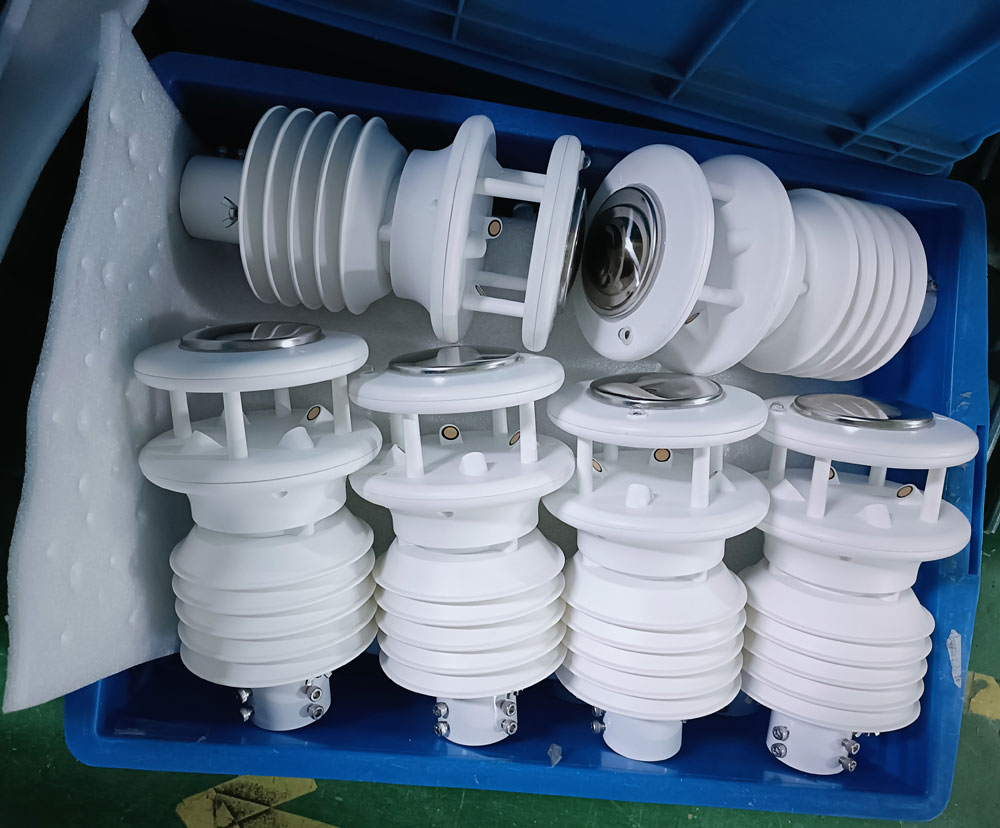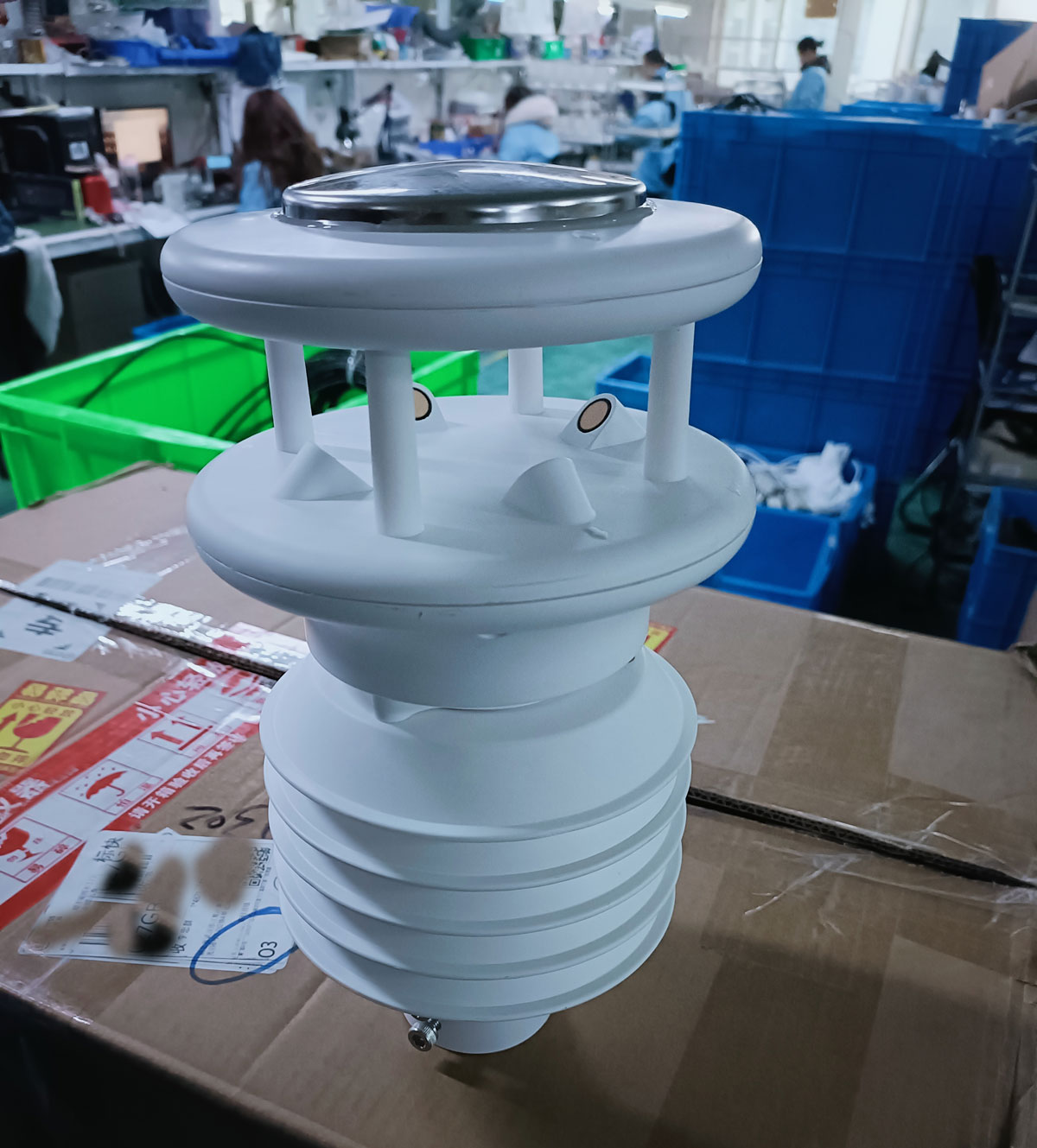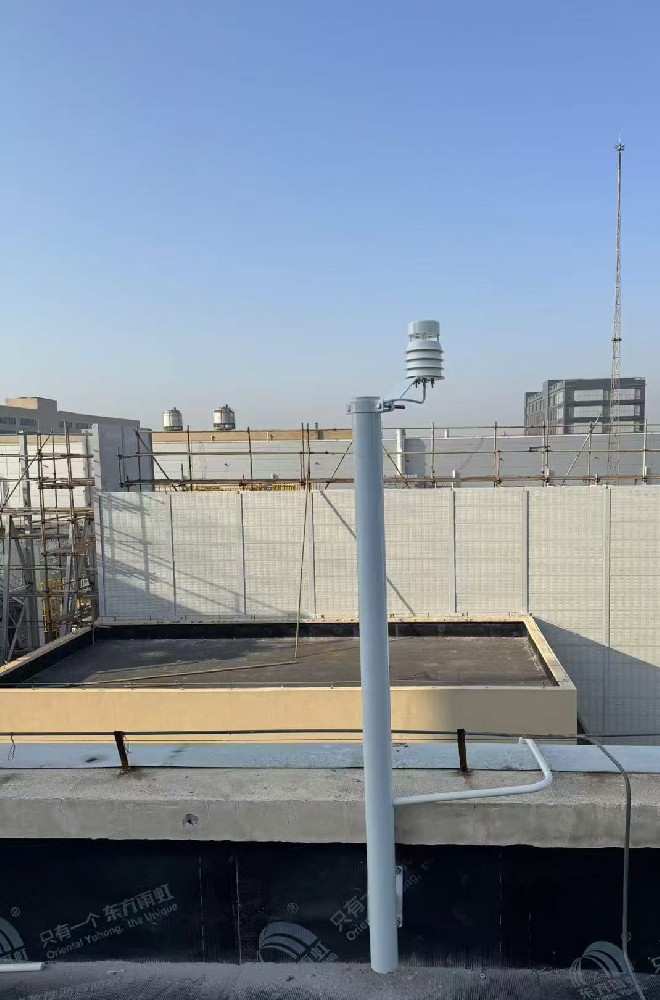

— Blogs —
—Products—
 Consumer hotline +8618073152920
Consumer hotline +8618073152920 WhatsApp:+8615367865107
Address:Room 102, District D, Houhu Industrial Park, Yuelu District, Changsha City, Hunan Province, China
Product knowledge
Time:2025-11-17 10:44:48 Popularity:193
As modern meteorological monitoring demands grow, weather stations are no longer exclusive to research institutions. They are increasingly vital in agriculture, forestry, urban management, and environmental monitoring.
Conventional Weather Station: Composed of multiple independent sensors (e.g., temperature, humidity, wind speed, wind direction, rainfall), each installed separately. Advantages include flexible sensor combinations based on specific needs.
Integrated Weather Station: Consolidates multiple monitoring elements into a single unit, supporting simultaneous detection of wind speed, wind direction, temperature/humidity, atmospheric pressure, rainfall, etc. Benefits include easy installation, compact design, and reduced maintenance workload.
The NiuBoL Integrated Weather Station features high-integration design and strong weather resistance, suitable for agriculture, forestry, urban management, and various other scenarios.
1. Sensor Design and Configuration
| Item | Conventional Weather Station | Integrated Weather Station | Pros/Cons Comparison |
| Sensor Type | Independent sensors, freely combinable | Multi-element integrated design | Integrated reduces wiring and installation complexity but slightly lower flexibility |
| Monitoring Elements | Customizable per needs | Fixed multi-elements (commonly 4–7) | Integrated suits standard monitoring; conventional fits complex scenarios |
| Maintenance | Calibrate and maintain each sensor separately | Overall device maintenance | Integrated is easier, reduces errors and damage risks |
Integrated stations have a longer lifespan due to compact structure, fewer mechanical parts, and less disassembly.
Conventional stations expose sensors to greater environmental risks but offer high flexibility with individual replacements upon damage.

- Conventional: Separate sensor installation, complex wiring, longer setup time.
- Integrated: Single-unit installation, reduced construction difficulty and time.
- Integrated: Price rises with elements (e.g., four-element, five-element, six-element models).
- Conventional: Depends on sensor count and brand; customizable for tailored applications.
Users should prioritize equipment quality, brand, and after-sales service—avoid low-cost inferior products that compromise accuracy.
- Site Selection: Open, unobstructed area away from buildings and tall trees.
- Height: Wind speed/direction sensors typically ≥10 meters.
- Lightning & Moisture Protection: Standardized wiring, power surge protection, waterproof transmission lines.
- Level Installation: Keep rainfall and light intensity sensors horizontal.
- Regularly clean dust and spider webs.
- Calibrate sensors every six months.
- Inspect power and data transmission systems.
- Promptly troubleshoot and repair anomalous data.
- Installation Flowchart: Bracket erection → Sensor mounting → Data logger setup → Cloud data upload → User-end viewing
- Data Flow Diagram: Sensors → Data logger → Wireless/wired transmission → Cloud platform → Mobile APP/PC interface

- Precision irrigation and fertilization
- Greenhouse environment control
- Real-time soil moisture and climate monitoring
- Fire risk monitoring and warnings
- Wind speed/direction and temperature/humidity data for fire decision support
- Urban environmental monitoring
- Air quality assessment
- Traffic and emergency dispatch support
- Long-term ecological monitoring
- Climate change studies
- Pollution prevention and control

Integrated consolidates multiple elements into one device for easy installation; conventional uses independent sensors for flexible combinations.
Integrated suffices for routine field management; conventional offers flexibility for specialized monitoring needs.
Varies by elements, sensor count, and manufacturer: approximately 12,000–30,000 RMB.
Longer due to compact structure and reduced disassembly; lower maintenance costs.
High flexibility—combine sensors as needed; replace individually if damaged.
Yes—via cloud platform, mobile APP, or PC for real-time data viewing and alerts.
Clean every six months to ensure data accuracy.
Set threshold alerts; troubleshoot promptly and contact manufacturer support.
Farmlands, forests, urban areas, research sites, greenhouses, etc.
Choose reputable manufacturers like NiuBoL; focus on quality, after-sales service, and technical support.

The NiuBoL Integrated Weather Station excels with multi-element integration, delivering easy installation, low maintenance costs, and high monitoring accuracy. Compared to conventional stations, it is better suited for standard agriculture, forestry, and urban environmental monitoring—ideal for users seeking convenience, intelligence, and reliability.
Select the appropriate type based on scenario, monitoring needs, and budget, while prioritizing brand reputation and after-sales service. With scientific selection and routine maintenance, NiuBoL weather stations provide precise, real-time meteorological data to support smart agriculture, forestry fire prevention, urban environmental management, and research decisions.
NBL-W-21GUWS-Ultrasonic-Wind-speed-and-direction-Sensor.pdf
NBL-W-61MUWS-Ultrasonic-Weather-Station-Instruction-Manual.pdf
NBL-W-71MUWS-Micrometeorological-Sensor-Operating-Instructions.pdf
Prev:Ultrasonic Integrated Weather Station: Selection Guide for Six-Element and Seven-Element Models
Next:Soil Moisture Sensor
Related recommendations
Sensors & Weather Stations Catalog
Agriculture Sensors and Weather Stations Catalog-NiuBoL.pdf
Weather Stations Catalog-NiuBoL.pdf
Related products
 Combined air temperature and relative humidity sensor
Combined air temperature and relative humidity sensor Soil Moisture Temperature sensor for irrigation
Soil Moisture Temperature sensor for irrigation Soil pH sensor RS485 soil Testing instrument soil ph meter for agriculture
Soil pH sensor RS485 soil Testing instrument soil ph meter for agriculture Wind Speed sensor Output Modbus/RS485/Analog/0-5V/4-20mA
Wind Speed sensor Output Modbus/RS485/Analog/0-5V/4-20mA Tipping bucket rain gauge for weather monitoring auto rainfall sensor RS485/Outdoor/stainless steel
Tipping bucket rain gauge for weather monitoring auto rainfall sensor RS485/Outdoor/stainless steel Pyranometer Solar Radiation Sensor 4-20mA/RS485
Pyranometer Solar Radiation Sensor 4-20mA/RS485
Screenshot, WhatsApp to identify the QR code
WhatsApp number:+8615367865107
(Click on WhatsApp to copy and add friends)
